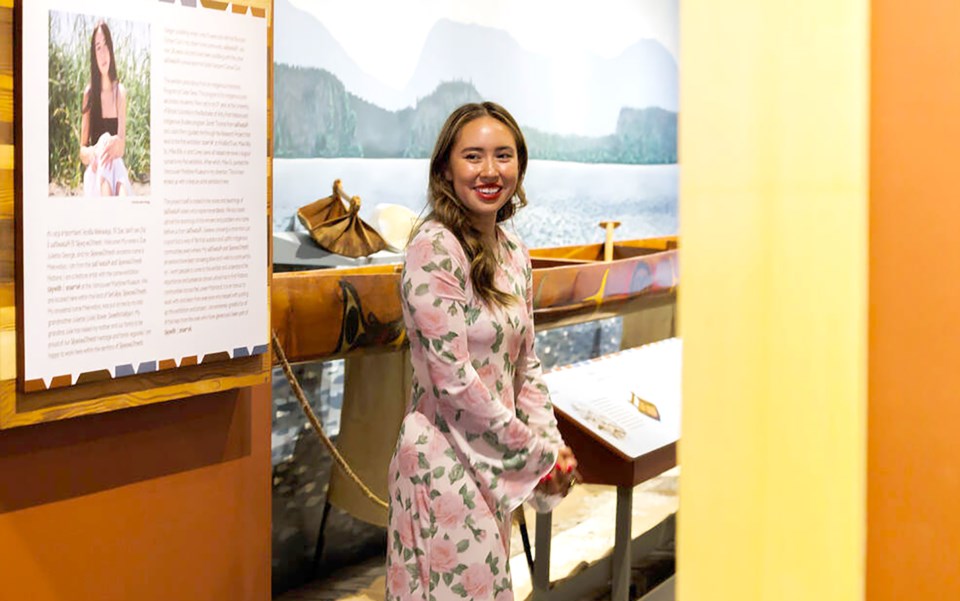Canoes are deeply embedded in səlilwətaɬ (Tsleil-Waututh Nation) history and culture, and one member is helping share that story in a museum exhibit.
Mekwalya (Zoe George)’s exhibit táywilh | snəxʷəɬ is currently on display at the Vancouver Maritime Museum, featuring canoe and paddles, history and interviews she conducted with family members highlighting the importance of war canoeing.
“I thought, what better way to do research than to share about canoeing and canoe culture, just because it is a really big part of my community’s life and a lot of other First Nations communities on the Lower Mainland,” George said, who also has Sḵwx̱wú7mesh (Squamish) ties.
George’s work is supported by the Clear Seas Indigenous Internship Program, which provides Indigenous post-secondary students who are interested in marine careers with an opportunity to complete research. Her main focus has been the historical impacts of colonization and industrialization and the lasting effects that they have had on First Nations’ ability to participate in traditional canoe culture.
Before Europeans arrived, Coast Salish communities had canoes for many different reasons.
“For Tsleil-Waututh, we were seasonal, and we would switch from village to village throughout the seasons and we’d use our canoes to move around,” George said.
Where war canoes were once used to wage war against other tribes, in 1864, B.C.’s colonial governor Frederick Seymour called for war canoe races to celebrate Queen Victoria’s birthday.
“It was kind of a tool to get us to integrate, but we also just used it as a way to preserve canoes and continue on parts of our culture,” George said.
Fast forward to today, ships coming into Burrard Inlet pose safety and navigation challenges for First Nations communities in canoes.
“The limited visibility these large ships have of our significantly smaller canoes means we are more at risk of collisions,” George said. “This means our waterways are shrinking for the places we have traditionally paddled and trained.”
Noise and air pollution are other factors that cause challenges for canoe clubs, she said.
In the modern day, the canoe is used less for transportation and more for racing, as seen in the Tsleil-Waututh Nation’s annual Whey-ah-Wichen Canoe Festival. The event draws in paddlers from Indigenous communities across B.C.’s South Coast and Washington State, along with hundreds of attendees who come to see the competition unfold.
George began paddling at 13 after her mother encouraged her to take it on. Shortly after, she joined the Tsleil-Waututh Nation women’s team. Now 25, George spends about half the year preparing for the Nation’s canoe festival, practising an hour-and-a-half per day, six days a week.
As she was conducting her research, George said she was surprised by how few people knew about war canoeing and that and she hopes the exhibit will educate the public on its history and cultural significance within the Coast Salish territory.
“Being able to participate in exactly what they held onto for us is just really important,” she said. “There’s a really big history there. It’s really shaped our city.”
táywilh | snəxʷəɬ is on display at the Vancouver Maritime Musuem until April 2026.
Abby Luciano is the Indigenous and civic affairs reporter for the North Shore News. This reporting beat is made possible by the Local Journalism Initiative.
https://bsky.app/profile/abbyluciano.bsky.social
Want to stay updated on North Vancouver and West Vancouver news? Sign up for our free daily newsletter.



